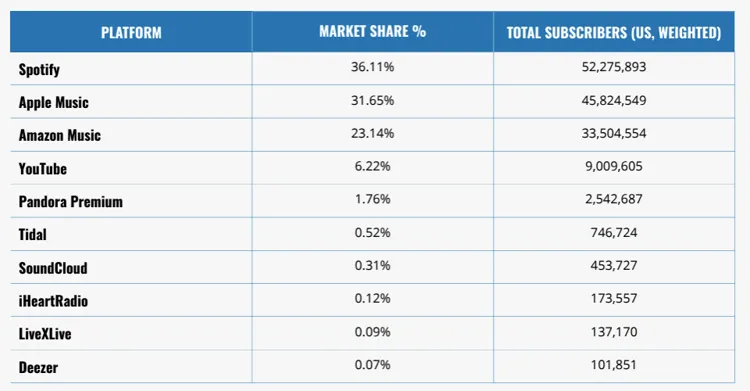The landscape of music streaming in the United States is undergoing a significant shift, with new data indicating a potential plateau in subscriber growth for many major platforms. While giants like Spotify and Apple Music continue to see modest gains, others are experiencing a contraction, suggesting the market might be nearing its saturation point. Among those facing headwinds is YouTube Music, which saw its subscriber numbers decline in 2024.
According to recent data from DMN Pro, YouTube Music experienced a slight dip of 0.21% in its subscriber base between December 2023 and December 2024. This comes at a time when the overall growth in music subscriptions across the US has largely flatlined. While a small decrease, it highlights the intense competition and the challenges of attracting and retaining users in an increasingly crowded market.
The data paints a picture of a market where a few key players are consolidating their dominance. Spotify and Apple Music now account for roughly two-thirds of all music streaming subscriptions in the US. When you include Amazon Music and YouTube Music, these top four platforms control a staggering 97% of the market. Add Pandora Premium to the mix, and that figure jumps to an almost complete 99%. This leaves very little room for growth for smaller players and indicates that the vast majority of potential subscribers have already chosen their preferred service.

Interestingly, while YouTube Music saw a decrease, its parent company Google has heavily invested in the platform, integrating it more deeply with the main YouTube video service. This integration was expected to provide a significant advantage in attracting new users from YouTube’s massive user base. However, the recent data suggests that even this built-in audience might not be enough to buck the trend of market saturation.
The reasons behind this plateau are likely multifaceted. With a plethora of streaming options available, consumers may be hesitant to subscribe to multiple services. Furthermore, the price points for standard subscriptions are fairly consistent across platforms, making it difficult for individual services to significantly differentiate themselves based on cost alone.
In response to this slowing growth, many streaming services are reportedly exploring new strategies to entice users to pay more. These “super premium” tiers could offer benefits like higher-quality audio, exclusive live concert access, and other perks. It remains to be seen whether these premium offerings will be enough to reignite substantial subscriber growth across the board.
YouTube doesn’t have a lossless streaming plan, something that Apple Music has been offering for a while now. This could be one reason why Apple Music has seen some growth while YouTube Music is failing to attract subscribers. But YouTube Music isn’t alone. For years, we’ve been waiting for Spotify’s Hi-Fi tier that was announced back in 2021, but even they’ve not been able to crack it yet.
The slight decline in YouTube Music’s subscriber numbers, alongside similar trends for other platforms like Amazon Music and Pandora, underscores the increasing maturity of the US music streaming market. While Spotify and Apple Music continue to edge forward, the era of rapid subscriber acquisition for everyone else may be drawing to a close, forcing companies to focus on retention and innovative ways to increase revenue from their existing user base.
Are you subscribed to a premium music service? Let me know in the comments below.
TechIssuesToday primarily focuses on publishing 'breaking' or 'exclusive' tech news. This means, we are usually the first news website on the whole Internet to highlight the topics we cover daily. So far, our stories have been picked up by many mainstream technology publications like The Verge, Macrumors, Forbes, etc. To know more, head here.



